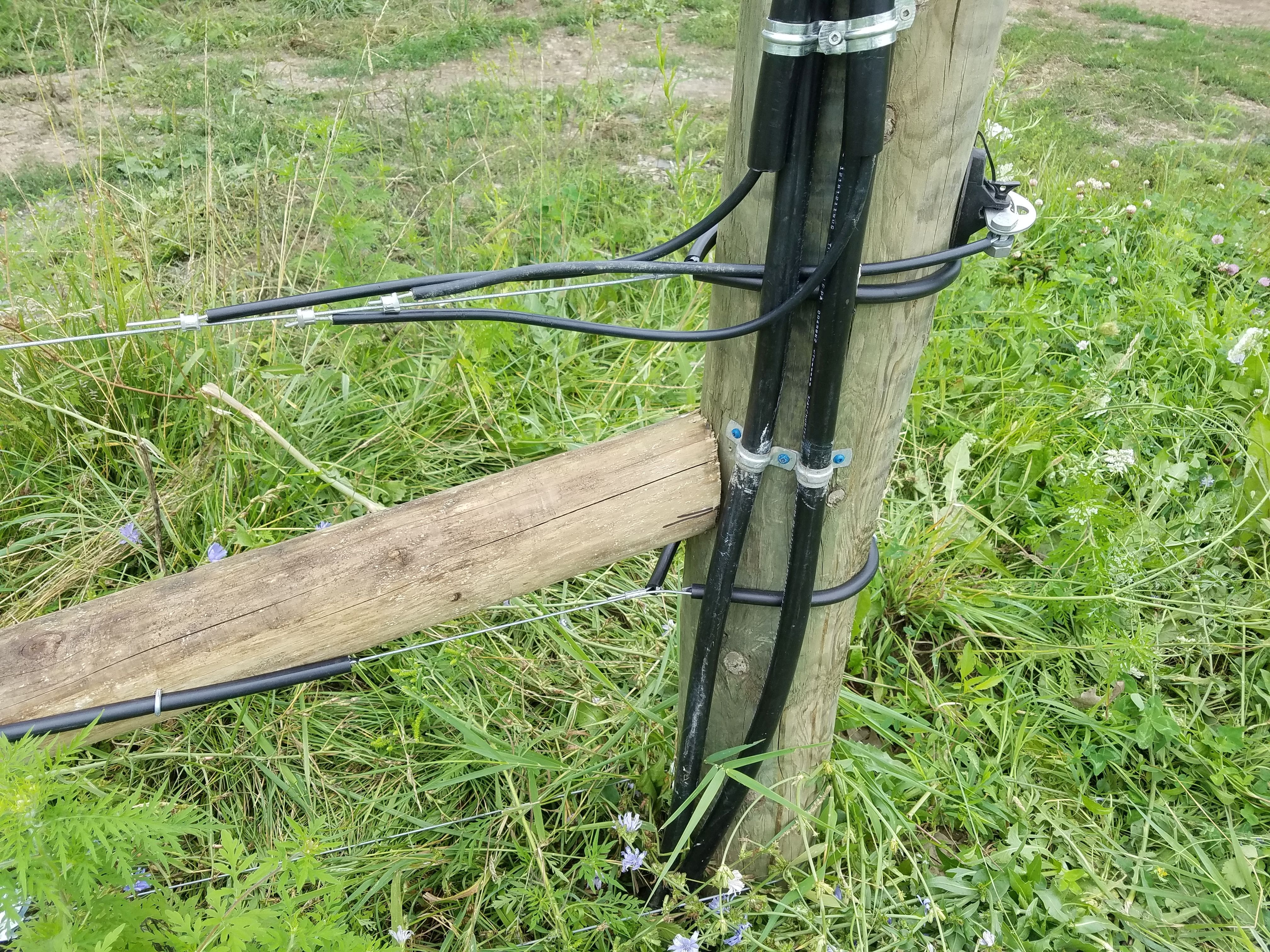Every year I chip away at fencing on the farm. And every year, my technique refines a bit. I’ve watched as minor differences contribute to a fence’s longevity or lack thereof. Most of my changes have been toward simplification. Fence construction manuals are all written by people selling fencing supplies. Caveat emptor.
I started with 6 wire electric fences, with an alternating hot-ground configuration. I learned that with our mostly wet climate, the alternating wire arrangement loses too much spark when high moisture vegetation gets between the two polarities. Now all our fences are hot. I also learned that 6 strands is overkill. If I had sheep, then perhaps I’d need the extra strands, but even there 3 strands would be sufficient for all situations except road frontage. All my new fences are two stranded. To speed up installation, I set the wires biometrically. The top strand goes in at the height where my pocket knife has worn a bare patch in my pants (all my work jeans get the same wear patterns) and the bottom strand goes in at the bottom of my kneecap. This arrangement works fine for our cattle. The top wire is low enough that I can jump the fence using a scissor kick jump, but the bottom wire is low enough that the cattle can graze under it, saving me the hassle of trimming under the fences. If I want to run pigs in that pasture, I just add an extra polywire strand temporarily.
Another change has been the switch from H braces to floating braces. It saves one driven post, and speeds things up considerably. My floating braced fences have proven more durable over time than my H braces. And now that I’ve dropped to two wires, I really don’t put much stress on the corner and end posts. I’ve had some floating braces in service since late 2012 (and those were hand-dug posts, which is the least reliable way to install posts). So if they can remain in perfect alignment through 125 degrees of temperature variation, floods, snowstorms, and bulldozers driving over the fence wires, then I think they’ll last until the posts rot.
I’ve played around with line post spacing. Originally I used 100 foot spacing with plastic droppers at 50 foot intervals. The droppers all failed within a few years, when the snow would drift over fences and buckle the droppers. I tried fiberglass (too splintery) and plastic composite (too weak after about five years). Both the fiberglass and poly posts were prone to frost heaving in winter and popping out during spring mud, just because it wasn’t possible to drive them below the frost line. I’ve gone back to all wood posts, driven four feet deep, and installed 75 feet apart. This seems to be the magic combination for fencing on relatively flat land. On bumpy terrain, the spacing needs to conform to the natural undulations, so spacing is tighter in these areas.

I’m always amazed at how much art and skill is involved in good work. I pass by fences, or houses, or sweaters, or paintings without stopping to consider what the creator of that work was thinking, or what that person had learned to enable the creation of the object. I probably wouldn’t enjoy a full time job of building fences, but I like the change of pace, when I am able to focus on getting a few important details correct, and then seeing the resulting product: a fence that will last us for many years.

3 thoughts on “Maturing Fences”
Good looking fence. What amazes me is your jumping ability!
Oh, it’s nothing. Really. The top wire is only 30-32 inches high. The only time it is hard to clear is when my boots are carrying a heavy load of mud on each sole. But it just takes a few times of landing on the fence and getting blasted to calibrate my jumps. The spark provides incentive to put a little extra pop into my leap.
I hear you! The fence catches us in a tender area.
I once wrecked my bicycle into an electric fence and was shocked continually until I freed myself.